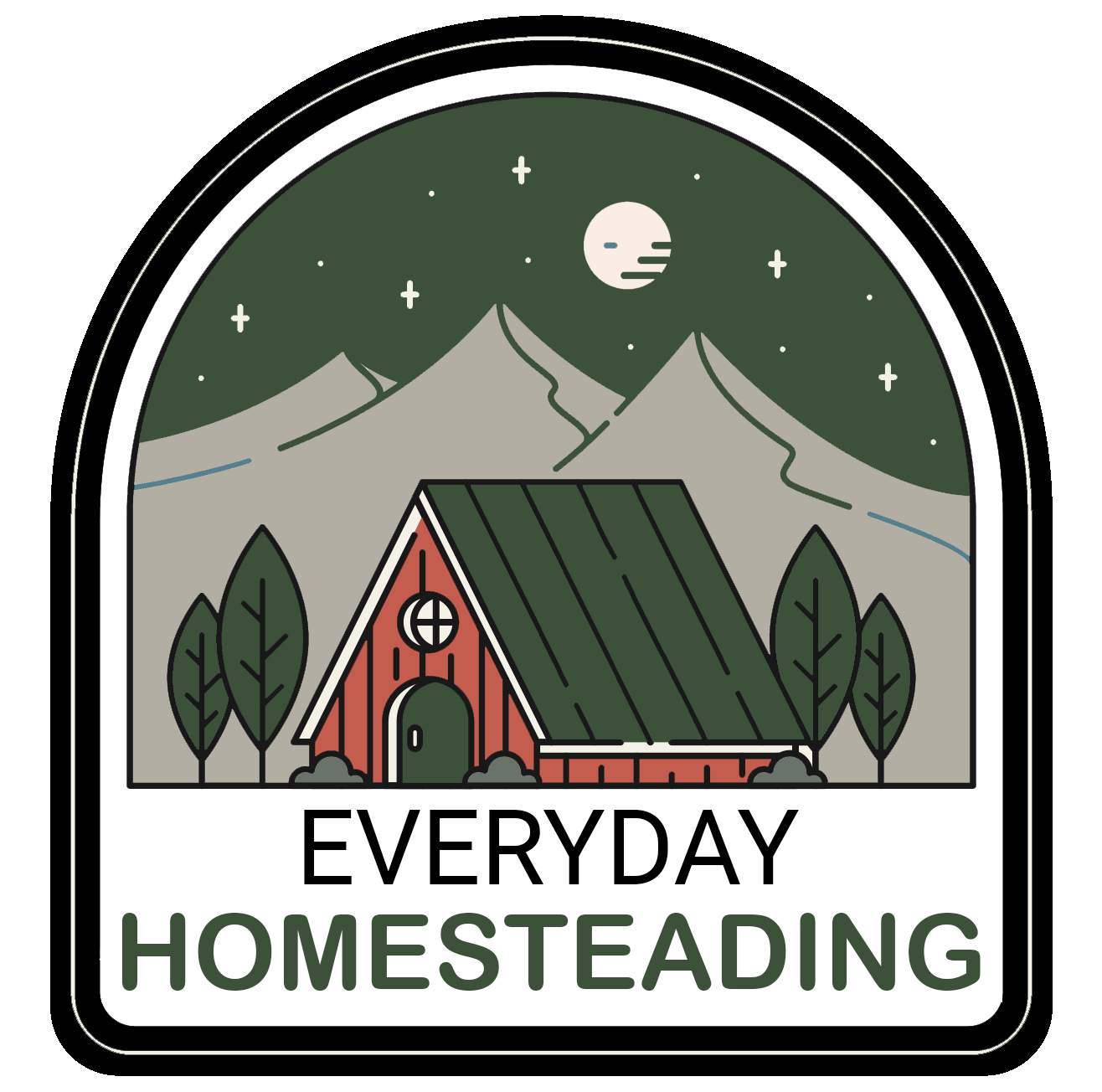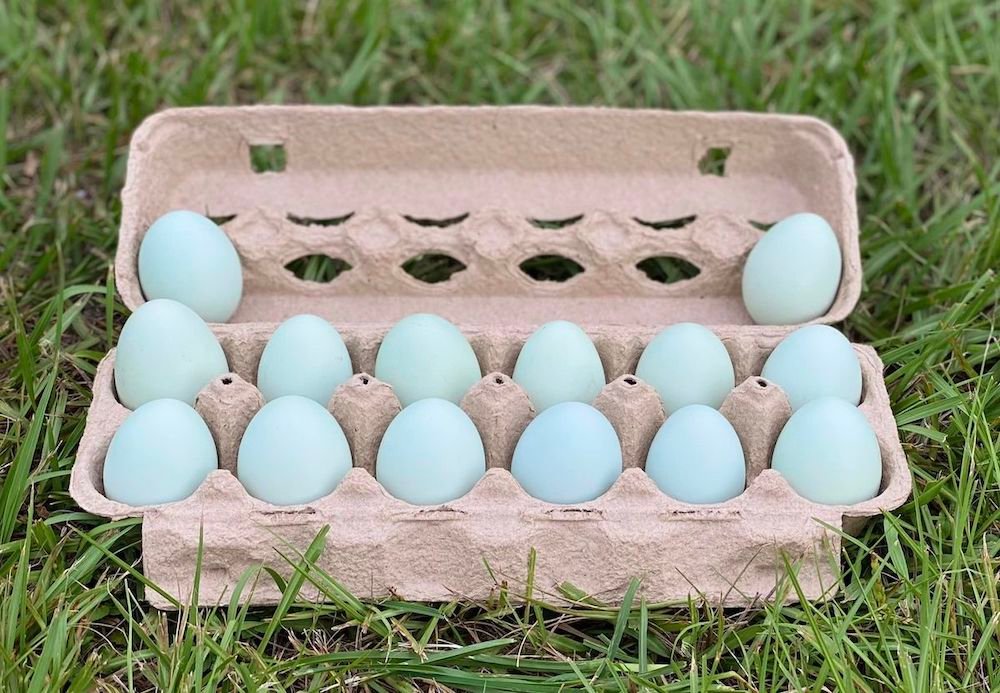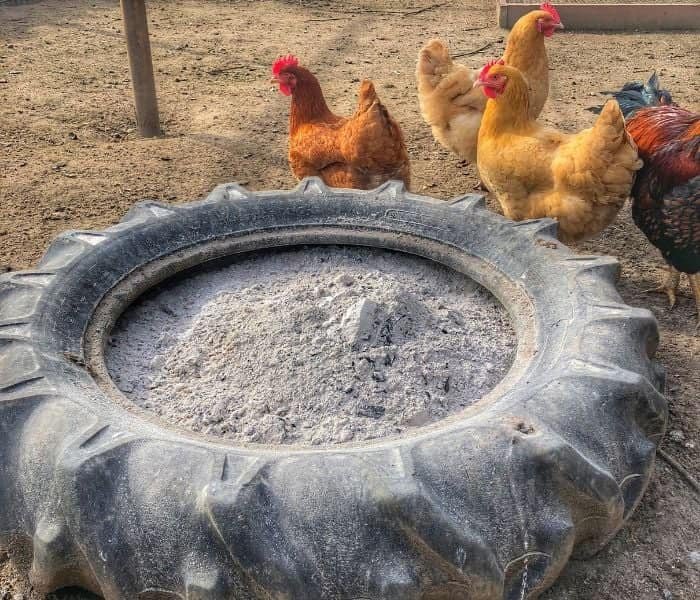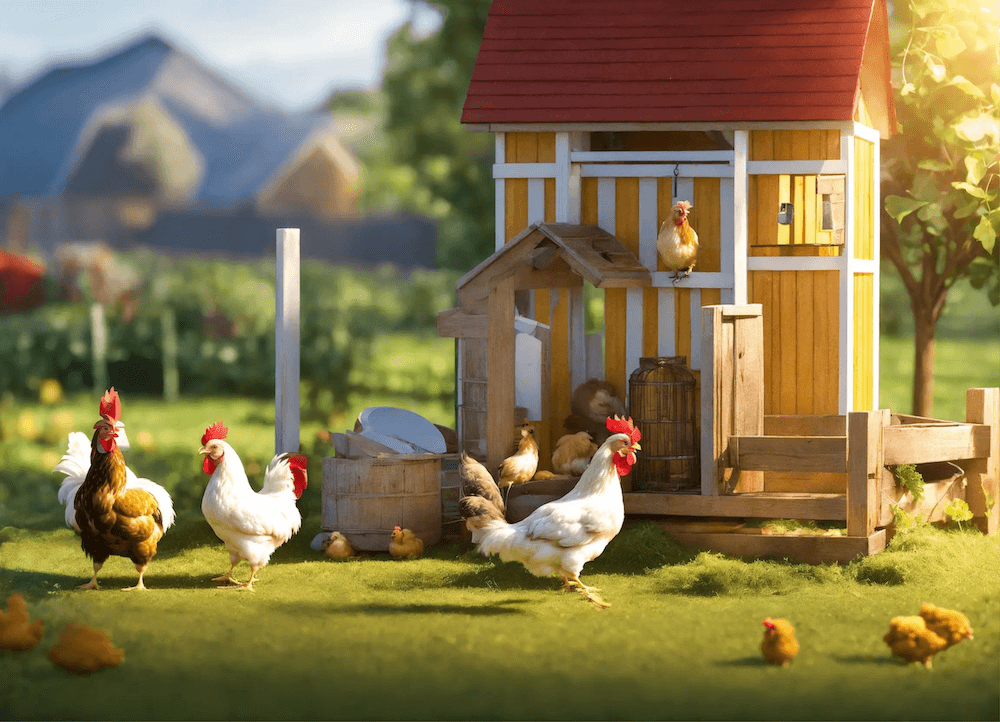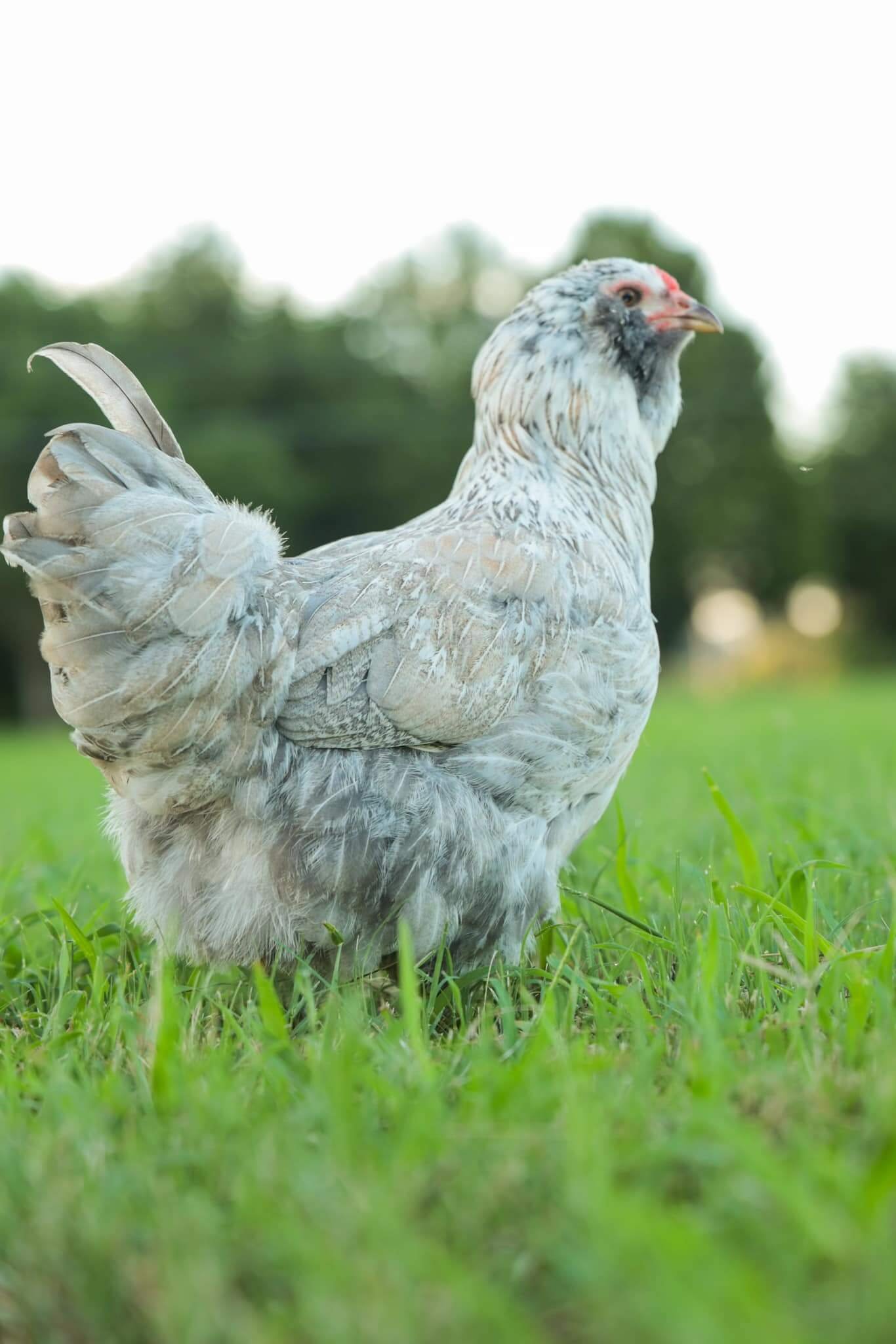Craft Your Own: The Ultimate Guide to DIY Chicken Feed and Homemade Rations

Thinking about making your own chicken feed? It sounds like a big step, right? Lots of chicken owners wonder if mixing their own feed is worth the trouble, or if it’s even safe for their flock. This guide is all about helping you figure out if homemade chicken feed is a good fit for you and your birds. We’ll look at the good parts and the not-so-good parts, so you can make a choice that works for your farm.
Key Takeaways
- Making your own diy chicken feed gives you full control over what your chickens eat, which can be a big plus for their health.
- It’s possible to make homemade chicken feed that’s just as good, if not better, than store-bought options, but you need to know what you’re doing.
- While making your own feed can save money, it’s not always cheaper, and it definitely takes more time and effort.
- There’s no single “perfect” homemade chicken feed recipe; what works best depends on your chickens and what ingredients you can get.
- Deciding whether to go with diy chicken feed or buy it comes down to your own time, resources, and what you want for your flock.
Why Consider Homemade Chicken Feed?
Benefits of DIY Chicken Feed
Why even bother with making your own chicken feed? Well, there are actually quite a few reasons why we might consider ditching the store-bought stuff. For starters, we get complete control over what our chickens are eating. No more wondering about mystery ingredients or questionable additives. We can choose high-quality, natural ingredients that we feel good about feeding our flock.
- We can source ingredients locally, supporting our community and reducing our carbon footprint.
- We can tailor the feed to our chickens’ specific needs, whether they’re chicks, laying hens, or retirees.
- We can avoid potential allergens or ingredients that our chickens don’t tolerate well.
Taking Control of Your Flock’s Diet
When we buy commercial feed, we’re putting our trust in the manufacturer to provide a balanced and nutritious diet. But what if we want something different? What if we want to supplement their diet with specific nutrients or cater to particular health concerns? That’s where homemade feed comes in. We can adjust the recipe to meet the unique needs of our flock, ensuring they get exactly what they need to thrive. It’s like being a personal chef for our chickens!
Making our own feed allows us to be more involved in our chickens’ health and well-being. We can research the best ingredients, experiment with different recipes, and monitor our chickens’ response to the feed. It’s a hands-on approach that can be incredibly rewarding.
Tailoring Feed to Your Chickens’ Needs
Different stages of life require different nutritional needs. Chicks need a high-protein diet to support their rapid growth, while laying hens need plenty of calcium for strong eggshells. With homemade feed, we can easily adjust the ingredients to meet these specific requirements. For example, we can add more protein-rich ingredients like fish meal to chick feed or supplement laying hen feed with oyster shells for extra calcium. This level of customization simply isn’t possible with most commercial feeds. Plus, if we have chickens with special dietary needs, like allergies or sensitivities, we can easily avoid those ingredients in our homemade mix.
Is Homemade Chicken Feed Safe and Nutritious?

Ensuring Nutritional Balance
When we consider making our own chicken feed, one of the first things that comes to mind is whether it will actually provide our flock with everything they need. It’s our job to make sure our chickens get the right nutrients. Commercial feed offers the reassurance that your chickens are getting the right nutrients, but a mistake in DIY calculations could be detrimental to your flock’s health. It’s not just about throwing a bunch of seeds together; it’s about understanding the specific dietary requirements of chickens at different stages of life – chicks, pullets, laying hens, and even older birds all have different needs. We need to think about protein, carbohydrates, fats, vitamins, and minerals. A good starting point is to research the nutritional requirements for each stage and then find ingredients that meet those needs. For example, fermenting poultry feed can promote gut health.
Understanding Dangerous Foods for Chickens
Just as important as knowing what to include in homemade chicken feed is knowing what to avoid. There are several common foods that are toxic to chickens, and it’s vital to be aware of them. Here’s a quick list of things to keep away from your flock:
- Avocado: Contains persin, which can cause heart problems and even death.
- Chocolate: Contains theobromine, which is toxic to chickens.
- Raw or green potatoes: Contain solanine, which is poisonous.
- Onions and garlic (in large quantities): Can cause anemia.
- Dried beans: Contain hemagglutinin, which is toxic unless cooked.
It’s always better to err on the side of caution. If you’re unsure about a particular food, it’s best to leave it out of your chicken feed mix. A little research can go a long way in keeping your flock healthy and safe.
The Myth of the ‘Perfect’ Chicken Feed’
Let’s be real: there’s no such thing as a single, perfect chicken feed recipe. There is no ‘perfect’ chicken feed recipe! What works for one flock might not work for another, and that’s okay. There are so many brands and variants of commercial feed available. Your homemade feed might not have as many diverse ingredients as a commercial feed, but it might contain fresher and even healthier ingredients! Unless there are any dangerous ingredients or major mishaps, your chickens will not notice a bit of a blooper. The key is to be flexible and willing to adjust your recipes based on your chickens’ needs and what’s available to you. Don’t get too hung up on the precision science of the poultry palate. We want the very best for our beloved birdies (and for brilliant eggs).
The Practicalities of Making Your Own Feed
Is Homemade Chicken Feed Easy to Make?
Okay, let’s be real. Making your own chicken feed isn’t quite as simple as tossing some scraps to your flock. It takes effort. The ease of it really depends on your setup and how much you’re willing to invest in the process. If you’re picturing yourself casually throwing ingredients together in a bucket, you might be in for a surprise.
- Sourcing ingredients can be time-consuming, especially if you’re aiming for specific nutritional profiles or organic options.
- Mixing large batches requires space and equipment. A good mixer can be a lifesaver.
- Balancing the recipe to meet your chickens’ needs takes research and attention to detail.
It’s not rocket science, but it’s also not something you can just wing. You need to be prepared to put in the time and effort to do it right. Otherwise, you might as well stick to store-bought feed.
Challenges of Mixing Your Own Feed
There are definitely some hurdles to jump when you decide to go the DIY route with chicken feed. One of the biggest is ensuring that your chickens are getting a balanced diet. DIY chicken coop plans are important, but so is the feed that goes inside.
- Nutritional Balance: It’s easy to miss key nutrients if you’re not careful. Commercial feeds are formulated to provide everything your chickens need.
- Ingredient Sourcing: Finding a reliable source of quality ingredients can be tough, especially if you live in an area with limited options.
- Storage: You’ll need a way to store your feed properly to prevent spoilage and pest infestations.
Managing Ingredient Costs
Cost is a big factor for many of us. Can you really save money by making your own feed? It depends. Sometimes, buying in bulk can lower the price per pound, but you have to use it before it goes bad. Also, consider growing some of your own ingredients. Here’s a quick look at how costs can vary:
| Ingredient | Cost per Pound (Estimate) | Notes |
|---|---|---|
| Corn | $0.20 | Relatively inexpensive, good source of energy. |
| Soybean Meal | $0.40 | Good source of protein, but price can fluctuate. |
| Sunflower Seeds | $0.60 | Adds healthy fats and variety, but can be pricier. |
| Oyster Shell | $0.15 | Inexpensive source of calcium, essential for laying hens. |
It’s a balancing act. You might need to mix cheaper grains with more expensive protein sources to keep costs down. Keep an eye on local prices and sales to get the best deals. Also, don’t forget to factor in the cost of your time. Is the potential savings worth the extra effort?
Crafting Your Own DIY Chicken Feed Recipes
Essential Ingredients for a Balanced Diet
When we’re diving into making our own chicken feed, it’s super important to understand what our feathered friends actually need. Think of it like cooking for humans – you wouldn’t just throw random stuff together and hope for the best, right? Chickens need a good balance of protein, carbohydrates, fats, vitamins, and minerals. Protein is key for growth and egg production, carbs give them energy, and fats help with vitamin absorption. Don’t forget calcium for strong eggshells! We need to consider all these things.
Here’s a quick rundown of some common ingredients and what they bring to the table:
- Grains: Corn, wheat, barley, and oats are great for carbs.
- Protein Sources: Soybean meal, sunflower seeds, peas, and fish meal are excellent choices.
- Calcium: Crushed oyster shells or eggshells are a must, especially for laying hens.
- Vitamins & Minerals: A good quality vitamin-mineral premix can help fill any gaps. You can also use things like kelp meal or alfalfa meal.
Sample Homemade Chicken Feed Mix
Okay, so now we know what to include, let’s look at a sample recipe. Remember, this is just a starting point – you’ll likely need to tweak it based on your chickens’ specific needs and what’s available to you. It’s important to monitor your flock’s health and adjust the recipe accordingly.
Here’s a basic mix we can try:
- 20% Corn (whole or cracked)
- 15% Oats
- 15% Millet
- 15% Barley
- 10% Peas
- 5% Fish meal
- 5% Kelp meal
- 5% Sunflower seeds
- 5% Dried blueberries or cranberries
- 3% Eggshells or shell grit
- 1% Vitamin-mineral premix
- 1% Alfalfa meal
This recipe is a good starting point, but don’t be afraid to experiment! We can adjust the ratios based on what we have on hand and what our chickens seem to like. The goal is to provide a balanced diet that keeps them healthy and happy.
Adjusting Recipes for Your Flock
One size definitely doesn’t fit all when it comes to chicken feed. We need to consider the age of our chickens, their breed, and whether they’re laying eggs. Chicks, for example, need a higher protein content than adult birds. Laying hens need extra calcium for strong eggshells. And if we have a mixed flock, we might need to get creative to make sure everyone’s getting what they need. Also, remember that there is no ‘perfect’ chicken feed recipe!
Here are some things to keep in mind when adjusting our recipes:
- Age: Chicks need a starter feed with around 20% protein, while adult birds can do with 16-18%.
- Laying Status: Laying hens need extra calcium – aim for around 4% in their diet.
- Breed: Some breeds are more prone to certain deficiencies, so do our research.
- Season: In the winter, we might want to add extra energy-rich ingredients like corn to help them stay warm.
We can also supplement their diet with treats and scraps from the garden, but remember that these should only make up a small portion of their overall diet. The bulk of their nutrition should come from their balanced feed mix.
Weighing the Pros and Cons of DIY Chicken Feed
Cost Savings: Fact or Fiction?
Okay, let’s talk money. One of the biggest reasons people consider making their own chicken feed is to save some cash. But does it actually save you money? It’s complicated. Sometimes, buying in bulk can be cheaper, but only if you have the right storage to prevent spoilage. Quinoa and hemp seeds are great, but they’ll definitely increase your costs. You can balance those with cheaper grains like barley. Ultimately, whether you save money depends on your sourcing, your flock size, and how much you value your time.
Time Commitment for Homemade Rations
Making your own feed isn’t just about throwing some ingredients together. It takes time. There’s the research to make sure you’re meeting nutritional needs, the shopping for ingredients, the actual mixing, and the storage. If you’re already stretched thin, adding another chore to your list might not be the best idea. Think about how much your time is worth. Is the potential cost savings worth the extra hours you’ll spend on feed?
Here’s a quick breakdown:
- Researching recipes and nutritional requirements
- Sourcing and purchasing ingredients
- Mixing and storing the feed
Consider this: time spent making feed is time not spent enjoying your chickens or doing other things you love. It’s a trade-off, and it’s important to be realistic about whether you’re willing to make it.
Homemade Versus Store-Bought Feed
Store-bought feed is convenient. You grab a bag, and you know it’s got the right nutrients. But you also might not know exactly what’s in it. Homemade feed gives you full control over ingredients, which is great if you want to avoid additives or preservatives. However, commercial feed offers reassurance that you’re getting the right nutrients. There’s no perfect chicken feed recipe! It really comes down to what you value more: convenience and guaranteed nutrition, or control and potentially fresher ingredients.
Making the Decision: Is DIY Chicken Feed for You?

Assessing Your Capacity and Resources
Okay, so you’ve read all about the ins and outs of making your own chicken feed. Now comes the big question: is it actually right for you? It’s not a one-size-fits-all answer, and it really boils down to what you can realistically handle. Think about it – do you have the space to store ingredients in bulk? What about the time to actually mix the feed regularly? These are important questions to ask yourself before diving in.
- Storage space for ingredients
- Time for mixing feed regularly
- Access to affordable ingredients
Prioritizing Your Flock’s Health
At the end of the day, the health of your chickens is what matters most. Store-bought feed offers the convenience of uniform nutrition, but homemade feed lets you control exactly what your chickens are eating. If you’re confident in your ability to create a balanced diet, then DIY might be a great option. However, if you’re worried about missing key nutrients, sticking with commercial feed might be the safer bet. Remember, there’s no shame in prioritizing your flock’s well-being above all else. It’s also worth remembering that there is no ‘perfect’ chicken feed recipe.
It’s understandable to worry that your DIY grub might not be on par with expertly tailored commercial feed. But, there is a reason why there are so many brands and variants of commercial feed available…
Finding Peace in Your Feeding Choices
Ultimately, the best feeding choice is the one that gives you peace of mind. Whether you decide to go the DIY route or stick with store-bought feed, what matters is that you’re making an informed decision that you feel good about. Don’t let anyone make you feel guilty for choosing the option that works best for you and your flock. If you enjoy the process of crafting your own feed and seeing your chickens thrive, then go for it! If you prefer the convenience and consistency of commercial feed, that’s perfectly fine too. Trust your instincts and do what feels right. You might even consider a starter/grower combination to ease the transition.
So, What’s The Crack? Is Homemade Chicken Feed Worth the Effort?
Alright, so we’ve talked a lot about making your own chicken feed. It’s a big decision, right? Like, is it cheaper? Maybe, maybe not. It really depends on where you live, what you can grow, and how many chickens you have. And is it healthy enough? That’s all on you, the chef. You gotta put in the work to find good stuff for your birds. But here’s the thing: whether you buy feed or make it, the main goal is to keep your chickens happy and healthy. Don’t stress too much about being perfect. Just do your best, and your flock will be fine. They just want to eat!
Frequently Asked Questions
What are the main reasons to make chicken feed at home?
Making your own chicken feed lets you pick exactly what goes into your birds’ meals. This means you can avoid stuff you don’t want, like certain chemicals, and focus on fresh, healthy ingredients. It also helps you use up extra food from your kitchen, which is good for your wallet and the planet.
Is homemade chicken feed healthy for chickens?
Yes, homemade chicken feed can be just as good as store-bought if you do it right. The key is making sure your chickens get all the important nutrients they need. It’s like cooking for people – you need a balanced recipe.
Does making chicken feed at home save money?
While making your own feed can save money sometimes, it’s not always cheaper. It depends on how much ingredients cost where you live and if you can buy them in bulk. Sometimes, store-bought feed can be more affordable, especially if you have a small flock.
Is it hard to make chicken feed yourself?
It can be! For some, it’s as simple as mixing a few ingredients. For others, it might mean more research and time in the kitchen. It really depends on how complex you want your feed to be and how many chickens you have.
Are there any foods chickens should not eat?
You need to be careful about certain foods that are bad for chickens. Things like avocado pits, raw beans, and green potatoes can make them sick. Always look up what’s safe and what’s not before adding anything new to their diet.
How do I know if homemade chicken feed is right for me?
The best way to know if homemade feed is right for you is to think about your time, your budget, and how much you want to control your chickens’ diet. If you enjoy knowing exactly what your birds are eating and have the time to mix feed, it might be a great choice.



